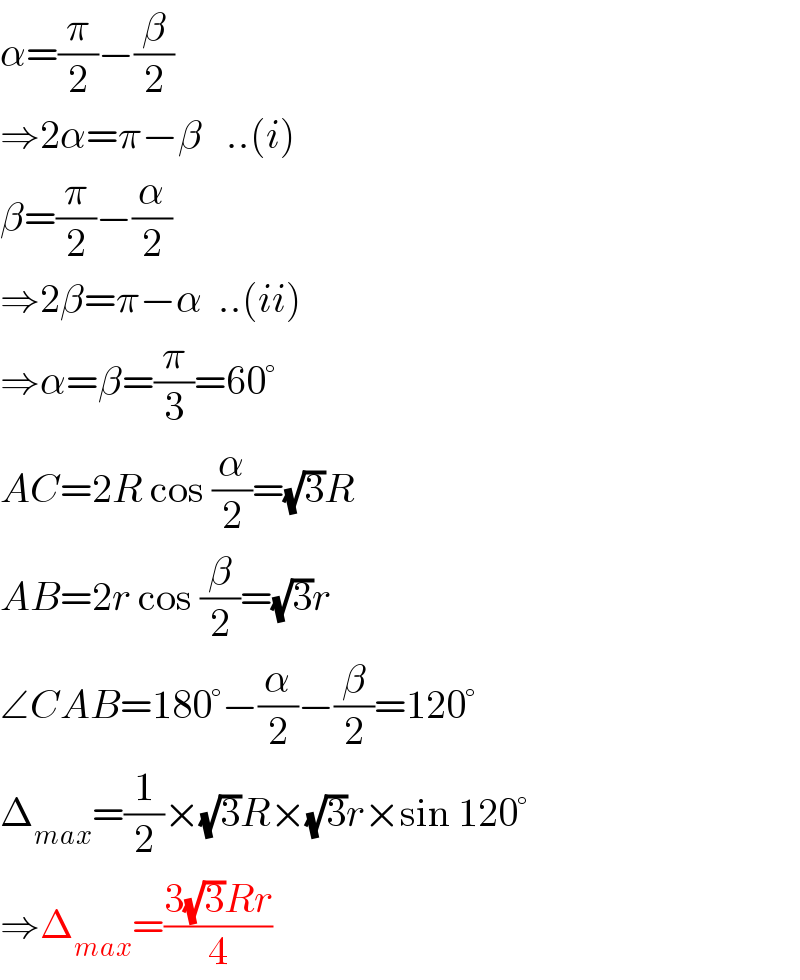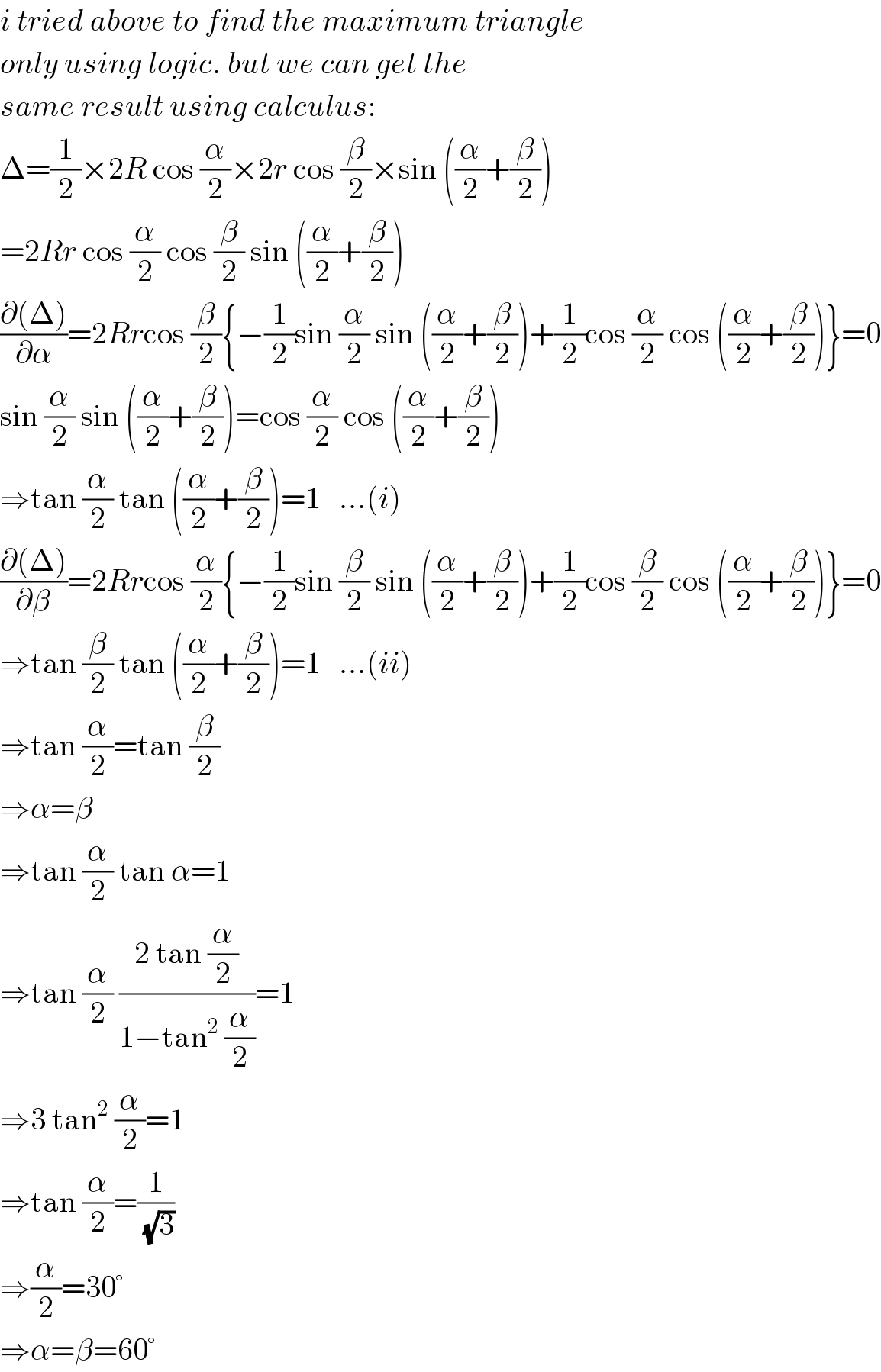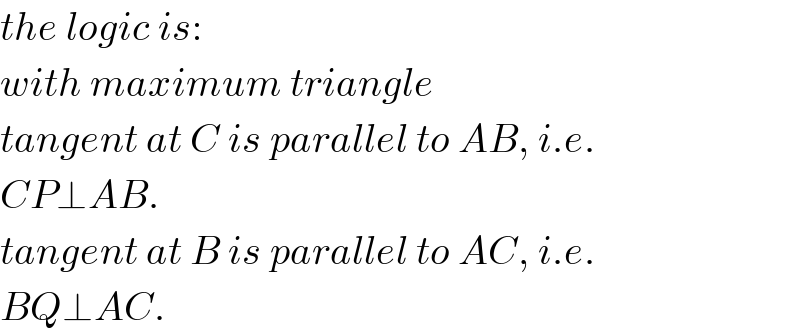
Question and Answers Forum
Question Number 54160 by ajfour last updated on 30/Jan/19

Commented by ajfour last updated on 30/Jan/19

Answered by mr W last updated on 30/Jan/19

Commented by mr W last updated on 30/Jan/19

Commented by ajfour last updated on 30/Jan/19

Commented by mr W last updated on 30/Jan/19

Commented by ajfour last updated on 30/Jan/19

Commented by mr W last updated on 30/Jan/19

Commented by mr W last updated on 30/Jan/19

